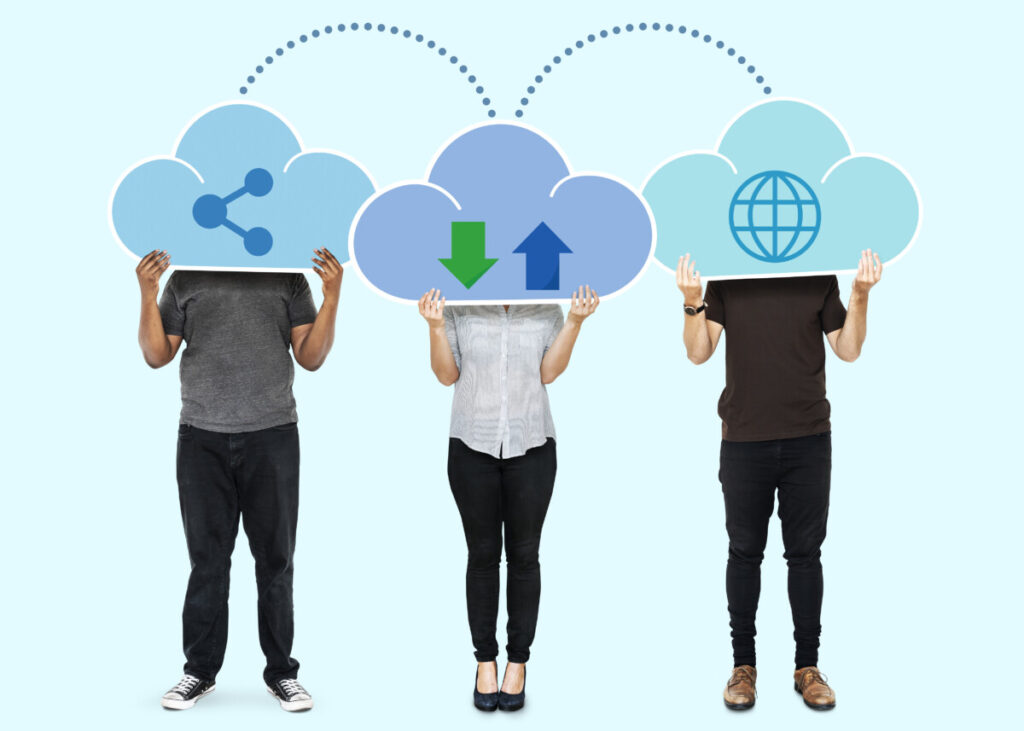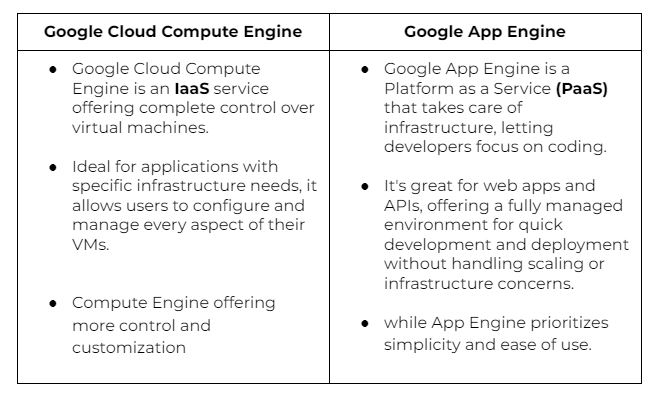Gartner predicts that the worldwide public cloud market will grow from $312.4 billion in 2020 to $364.1 billion in 2022 and then reach $501.3 billion in 2024. This represents a growth rate of 18.4% each year.
What is Google Cloud Computing
Google Cloud Computing is a collection of services and tools that allow users and companies to store, manage, and access data and apps online instead of on local computers. This comprehensive platform includes a variety of tools and services, spanning computing, storage, machine learning, and more.
One noteworthy component within this ecosystem is Google Cloud Compute Instances. These virtual machines enable users to run applications and process data in the cloud, eliminating the need for investing in and managing physical hardware.
Google Cloud Compute Instance Types
Let’s Navigating the Options for Your Workloads
Google Cloud offers different types of instances, each tailored for specific tasks:
- Standard Instances: Balanced computing power for general use.
- Memory-Optimized Instances: Ideal for memory-intensive applications like databases.
- Compute-Optimized Instances: Designed for compute-intensive tasks like data processing and analysis.
- GPU Instances: Equipped with Graphics Processing Units for tasks like machine learning and video processing.
Google Cloud Compute Engine Benefits for Users

Google Cloud Compute Engine brings a multitude of advantages to users, blending scalability, performance, and global accessibility.
Here’s how it caters to your needs:
Scalability: With Google Cloud Compute Engine, users effortlessly adjust their computing resources to match demand. This flexibility streamlines the management of varying workloads without necessitating substantial upfront investments in hardware.
Performance: The foundation of Compute Engine rests on Google’s robust infrastructure, the very backbone powering renowned services like Google Search and Gmail. This shared infrastructure ensures top-notch performance and unwavering reliability for your applications.
Global Reach: Compute Engine gives consumers access to a worldwide network so they may set up their services and apps in various parts of the world. This helps in reducing latency and ensuring a better user experience for a geographically diverse audience.
Customization: Users have the flexibility to customize their virtual machines (VMs) to meet specific requirements, choosing the amount of CPU, memory, and storage needed for their applications.
Security: Google Cloud Platform, including Compute Engine, provides a robust security infrastructure. This includes services like identification and access management, encryption both in transit and at rest, and adherence to industry-specific standards.
Cost Efficiency: Users only pay for the resources they use, making it cost-effective. Google Cloud also offers various pricing models, such as sustained use discounts and preemptible instances, which can further optimize costs.
Integration with Other GCP Services: Compute Engine seamlessly integrates with other Google Cloud services, allowing users to build comprehensive and scalable solutions. This includes services for data storage, machine learning, and data analytics, among others.
Managed Services: While Compute Engine provides infrastructure as a service (IaaS), Google Cloud Platform also offers higher-level managed services, allowing users to focus more on their applications and less on infrastructure management.
Google Cloud Compute Firewall: Security is paramount, and Compute Engine doesn’t disappoint. It has strong firewall features to protect your data and apps from potential attacks and unauthorized access.
Google Cloud Compute Engine vs. App Engine
Google Cloud Compute Engine and App Engine are both integral components of Google Cloud, but They have varied functions and fit different situations.

Do You Wanna Know The BEST PART?
Discover Google Cloud Compute for Free
In an era where cost is a significant consideration, Google Cloud offers an enticing proposition – free cloud computing. Google provides a generous free tier that allows users to explore and experiment with various services without incurring charges.
The Google Cloud Free Tier includes a range of products, including Compute Engine, allowing users to run virtual machines at NO COST within specified usage limits.
The Google Cloud Compute Free Tier is a fantastic chance for people, developers, and small businesses to try Google Cloud Computing without spending money. It’s a way for users to explore Google Cloud Compute instances, try different setups, and see if the platform fits their needs.
Is Firewall-As-A-Service (Fwaas) Different From Cloud Firewalls?
Firewall-as-a-Service (FWaaS) is often used interchangeably with the term cloud firewalls. Much like other “as-a-service” models such as software-as-a-service (SaaS) or infrastructure-as-a-service (IaaS), FWaaS operates in the cloud, accessible over the Internet, and is administered and maintained by a third-party vendor.
Top 12 Cloud Computing Trends 2024
Around the world, businesses are expected to spend over $1 trillion on cloud computing infrastructure in 2024. This growth is driven by the rising need for new platforms and services, like artificial intelligence (AI). Beyond just saving time and money, companies now see cloud migration as a crucial step for becoming more innovative and successful.
Which cloud computing innovations are among the most significant, then?
Here is the list of the top 12 trends to see where this industry is headed in the future.

To Sum Up
In conclusion, Google Cloud Computing stands as a gateway to a transformative digital era, simplifying complexities and fostering innovation. From efficient data management to the development of robust applications, its user-friendly tools redefine how we navigate the vast landscapes of technology.
Seize the ease and innovation – welcome to the cloud-driven journey!
[WPSM_AC id=363]





